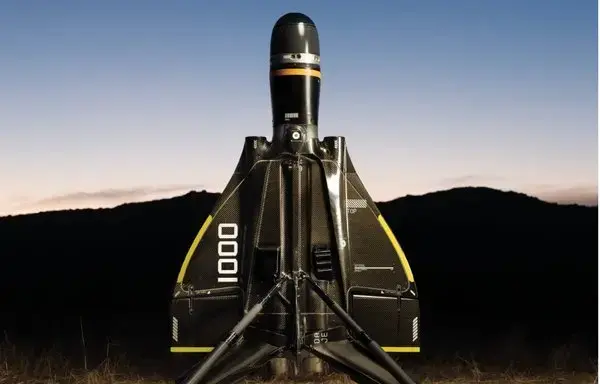The US Navy is enhancing its maritime air defenses with a new class of reusable anti-drone interceptors called the Roadrunner -- a cost-effective, autonomous system built to counter the growing threat of unmanned aerial systems (UAS).
The Roadrunner is a significant advancement in aerial defense technology that could signal a new era in ground-based air defense.
Designed for versatility and efficiency, it boasts vertical takeoff and landing capabilities, and can be re-used.
The Roadrunner-Munition (Roadrunner-M) combines the capabilities of a missile, drone and loitering munition. It joins a growing fleet of small, unmanned aerial systems that are force multipliers in asymmetric warfare.
The primary role of the Roadrunner-M is to defeat the type of low-cost aerial threats that are increasingly used to target high-value naval assets.
Roadrunner-M can respond rapidly and can be recovered and reused if its warhead is not deployed, reducing costs compared to traditional missile interceptors.
Unlike conventional surface-to-air missiles, Roadrunner-M launches vertically from shipboard systems and uses twin turbojet engines to reach high subsonic speeds.
It can loiter in the vicinity of the carrier strike group (CSG), awaiting tasking against incoming threats. Once a target is assigned, the munition maneuvers dynamically to intercept and neutralize at ranges approaching 10 miles.
If no target is identified, the system can autonomously return to the ship for recovery and refueling. These features give commanders additional flexibility in high-threat environments.
Rapid threat detection
Another vital new system giving US forces a cutting-edge advantage in defeating enemy drones is the Coyote UAS family.
Several Coyote variants are capable of performing intelligence, surveillance and reconnaissance missions, as well as striking targets and neutralizing enemy drones.
The Department of Defense ordered over 500 Roadrunner-M interceptors in October 2024, following successful demonstrations in maritime environments.
The system has now entered full-rate production, with a capacity to manufacture up to 1,000 units per year.
Technically classified as an Autonomous Aerial Vehicle (AAV), Roadrunner-M operates via AI-powered command and control systems and can be networked with existing radar and sensor systems aboard US Navy warships.
This integration allows for rapid threat detection, target assignment and launch without direct pilot control. A single operator can manage multiple Roadrunner-M units, increasing efficiency and reducing manpower demands.
With the ability to intercept, adapt and recover, the Roadrunner-M is positioned to become a key layered shipboard defense.







Hope to see competitive Arab systems ...
Reply